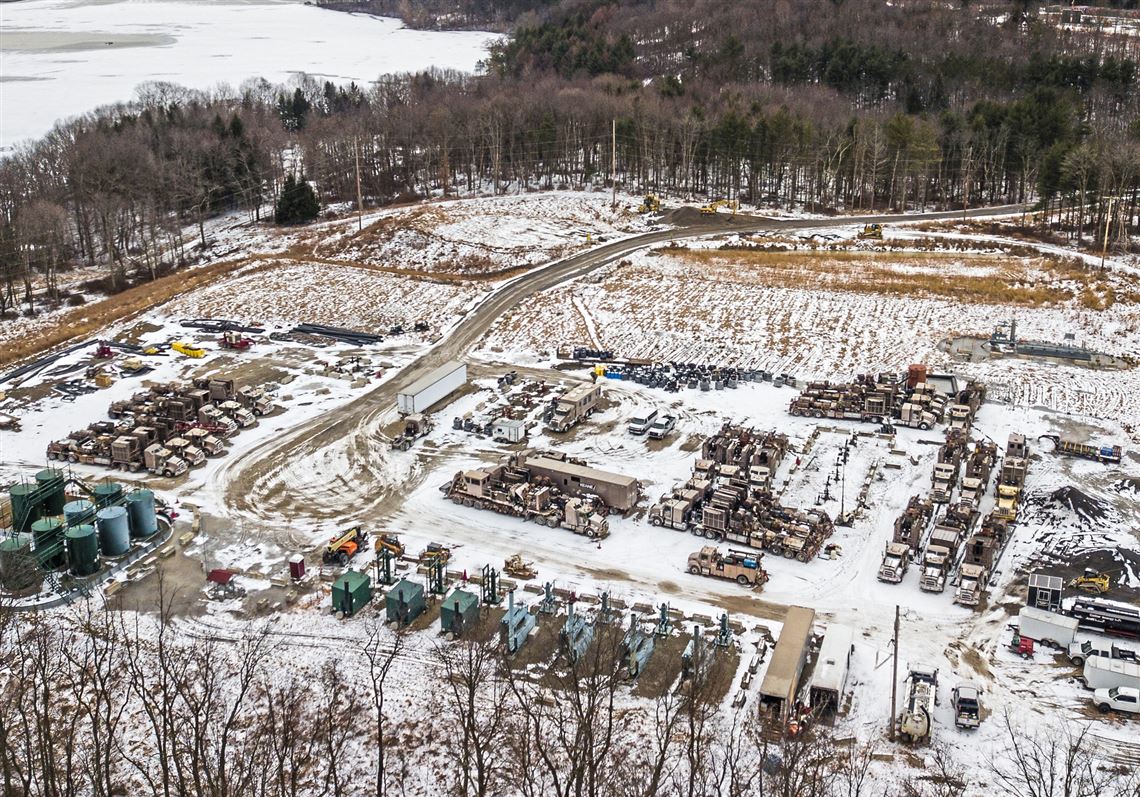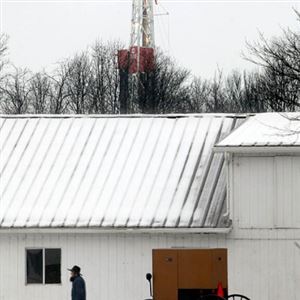A new round of impairments is underway in the oil and gas industry, where companies are forced to recalculate and reduce the value of their assets to reflect a down market.
CNX Resources Corp., a Cecil-based exploration and production company, joined the fray Thursday by writing down $446 million in assets in Central Pennsylvania. The drop means the oil and gas reserves in those areas are no longer considered economic and will not be developed in the near future. The reason for the change was continued low natural gas prices, which have been putting a damper on corporate earnings for many months.
Next month, Downtown-based EQT Corp., the largest natural gas producer in the country, is expected to write down between $1.4 billion and $1.8 billion in assets, the company said in a public filing earlier this month.
That comes on the heels of a blockbuster $10 billion impairment by Chevron Corp. last month, more than half of which was attributed to Appalachian oil and gas assets. Chevron announced it has put its operations here up for sale and will be leaving the basin.
In a cyclical commodity business, impairments also come in waves. The last one hit around 2015, after spot natural gas prices fell and stayed below $3 per million British thermal units, where they’ve mostly remained since then. Since the beginning of 2020, prices have been closer to the $2 mark and even dipping below it.
This means some prospects that could have made money in a better market are no longer viable.
Impairments aren’t necessarily indicators of how well a company is operating. CNX, for example, as well as many of its peers, has consistently driven down the cost of getting its gas out of the ground. It would have turned a profit for the past quarter if not for the impairment charge.
Instead, these write-downs have the effect of shrinking the collateral that companies leverage to borrow money.
On the ground, it means that some oil and gas leases will be allowed to expire without follow-up and some potential drilling locations are now off the table.
This is what happened to Downtown-based EQT, which announced a 20% decrease in reserves earlier this month. The change also eliminates 265 potential drilling locations. There are now 1,685 places where EQT can drill future wells, although new CEO Toby Rice has emphasized that a focus on large-scale combo development will allow more gas to be extracted from fewer well pads. (It’s worth noting that in 2017, when EQT and Mr. Rice’s former company Rice Energy Inc. were selling their merger to shareholders, their pitch projected a combined 3,700 drilling locations.)
The Appalachian basin is not hurting for more shale gas development.
“Natural gas stocks have been one of the weakest segments of the broader market over the past five years, as runaway supply growth from shale productivity gains and associated gas growth has overwhelmed demand,” analyst Arun Jayaram of JP Morgan wrote last week in an analysis of EQT Corp.
Over the past six months, while the S&P 500 index climbed about 11%, the S&P exploration and production index dropped by 17%.
CNX and EQT are both members of that oil and gas company index. Both are down compared to last summer, but while CNX’s stock slid 3% during that time, EQT is down a whopping 55%.
EQT closed at $6.19 per share Thursday. CNX closed at $7.01.
That’s been the Catch-22 of the U.S. oil and gas renaissance. Drillers aren’t running out of assets, but they are running out of cash since shareholders and banks shifted from demanding growth to demanding returns.
"Drilling programs are threatened even for those with low break-even thresholds," Vincent Piazza, senior analyst at Bloomberg Intelligence, wrote in a note last week.
Even though CNX has already hedged all of its 2020 gas production at a price comfortably above the current and expected market rate, the company still shaved another $40 million from this year’s capital budget Thursday.
“We’ve taken control of the things within our control,” CNX CEO Nick DeIuliis told analysts after the company reported its financial results.
EQT has done the same, dropping its proposed 2020 budget by $50 million to keep production flat this year.
Anya Litvak: alitvak@post-gazette.com or 412-263-1455
First Published: January 31, 2020, 12:49 p.m.


















